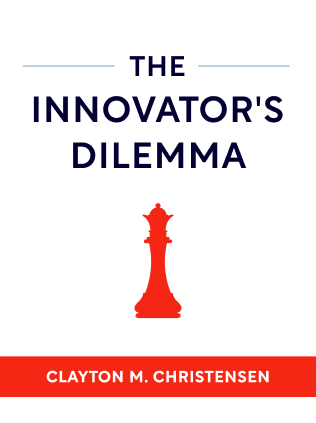

This article is an excerpt from the Shortform summary of "The Innovator's Dilemma" by Clayton M. Christensen. Shortform has the world's best summaries of books you should be reading.
Like this article? Sign up for a free trial here .
What are the advantages of a big company vs. a small company? How do the benefits of small businesses come into play when innovating?
The big company vs. small company analysis comes down to what you’re looking for. In terms of creating disruptive innovations, the advantages of small companies include agility and lower ongoing costs.
Read on to understand the comparison of big company vs. small company for disruptive innovations.
Big Company vs. Small Company: The Pressure to Grow
Companies typically get bigger the longer they’re in business. What does this mean for a big company vs. a small company? While growth equates to success under normal circumstances, it inhibits companies from transitioning to disruptive technologies.
As companies get larger, they need to bring in increasing profits to cover growing costs. The larger a company gets, the less it’s able to spend valuable resources on projects with low profit margins.
Most executives feel pressured to continue growing their companies for several reasons:
- The growth rate of a company’s earnings drives its stock prices, which makes investors happy, which puts the company in a good position to access capital. Additionally, employees who have stock options are incentivized to continue working hard when stock prices are growing.
- Growth helps keep top-performing employees in the company, because it creates room for them to move up to higher positions. If the company stagnates or struggles, it risks losing its best employees to other, more successful companies.
- Growing companies can justify investments in new technologies more easily than stagnated companies can.
However, perpetual growth creates a conundrum: The bigger a company gets, the harder it is to continue growing. So, in considering a big company vs. a small company, growth is easier when you’re smaller.
For example, if a $40 million company aims to maintain a 20 percent annual growth rate, the goal is much easier to attain in the early years—$8 million the first year, $9.6 million the next year—but the figure quickly climbs. The $8 million growth the company needed in the first year more than doubles by the fifth year and nearly triples by the seventh year. By the time the company is worth $400 million, it needs to bring in $80 million to maintain its growth rate.
The emerging markets for disruptive innovations are too small to support large companies’ growth needs. This is part of the calculus in considering a big company vs. a small company. But if big companies wait until the disruptive technology’s market is established enough to better satisfy their growth needs, they miss the critical window for entry. This shows one of the benefits of small businesses.
Advantages of Small Companies to Address the Innovation Dilemma
When large established firms are confronted with this dilemma, they typically take one of three approaches:
- Try to push the emerging market to grow more quickly
- Wait until the market has grown
- Create independent entities to develop and market the disruptive technology, and make sure the entity is small enough to match the size of the market
As we’ll see in the following case studies, the first two strategies are seldom successful. By contrast, the third strategy is the most effective way for a company to tackle a disruptive project.
We talked in the last chapter about the benefits of an established firm creating an independent organization to lead disruptive projects. There’s a big company vs. a small company balance here. When a company creates the independent entities, it’s essential that its size fits the small (albeit unknown) market it’s targeting, because:
- Small companies are free of large companies’ high-profit growth obligations. This is one of the advantages of small companies.
- Small entities can get excited about small opportunities and victories that would be considered disappointing in the context of a big company, and that enthusiasm is critical to driving motivation to push the project’s progression. That’s another one of the benefits of small businesses.

———End of Preview———
Like what you just read? Read the rest of the world's best summary of Clayton M. Christensen's "The Innovator's Dilemma" at Shortform .
Here's what you'll find in our full The Innovator's Dilemma summary :
- Christensen's famous theory of disruptive innovation
- Why incumbent companies often ignore the disruptive threat, then move too slowly once the threat becomes obvious
- How you can disrupt entire industries yourself





